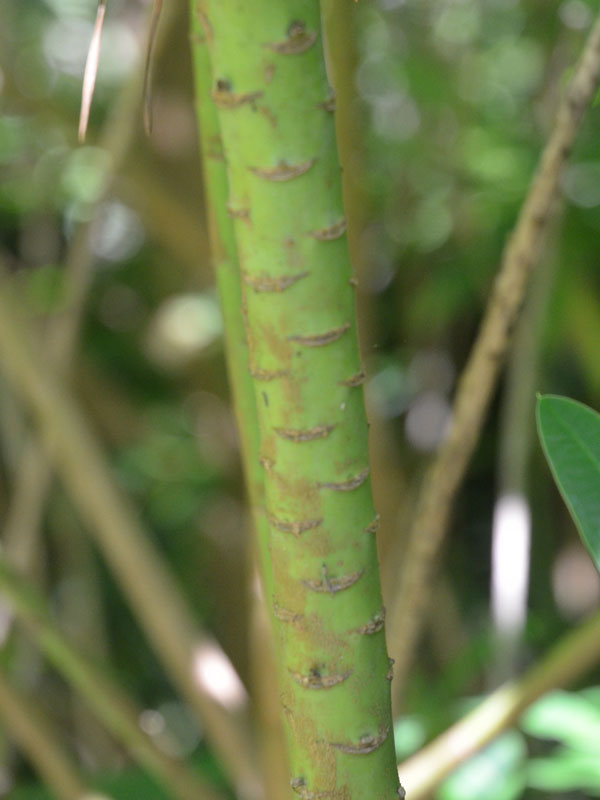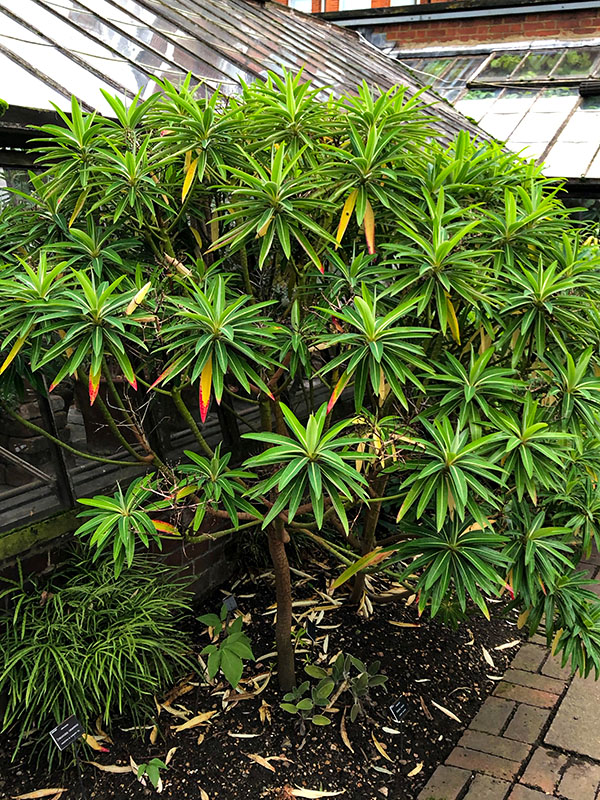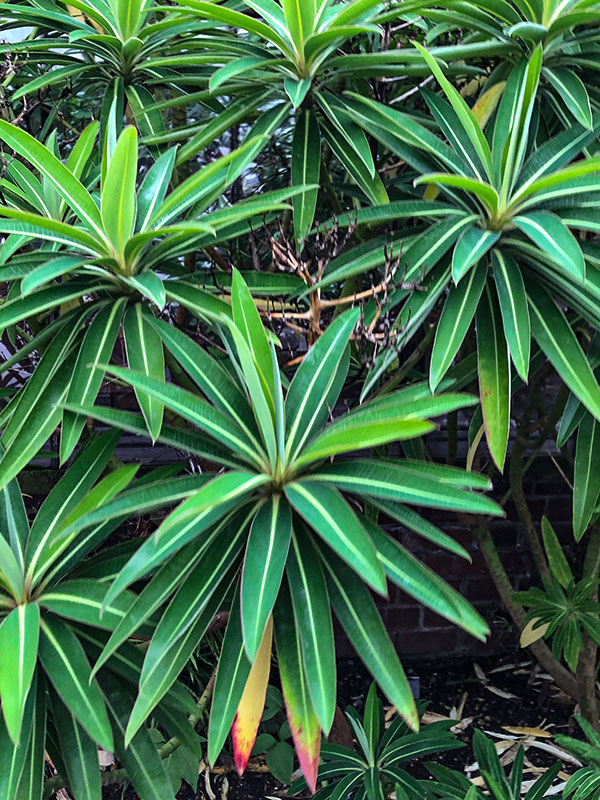
Perennials, Tropicals > Euphorbia > Euphorbia mellifera > Euphorbia mellifera
Euphorbia mellifera
Canary Spurge, Honey-scented Spurge
Origin: Macaronesia, endemic to the islands of Madeira, La Palma, La Gomera and Tenerife. It is found to be in steep decline in its natural habitat due to land clearing, however it is popular as a cultivated garden plant.
| Family |
| Euphorbiaceae |
| Genus |
| Euphorbia |
| Species |
| mellifera |
| Category |
| Perennials, Tropicals |
| Type |
| Tree (evergreen), Shrub (evergreen) |
| USDA Hardiness Zone |
| 9a - 9b |
| Canadian Hardiness Zone |
| 9a |
| RHS Hardiness Zone |
| H3 |
| Temperature (°C) |
| -5 to 1 |
| Temperature (°F) |
| 23 - 34 |
| Height |
| 15 m in the wild, 1-1.8 m in cultivation |
Photographs
Description and Growing Information
Flowering Period
| General Description |
| A dome-shaped evergreen shrub to small tree in the wild with narrow, bright green leaves with a pale mid-vein, and honey-scented, brownish flower-heads in March in its native habitat to late spring in cultivation. |
| Cultivation |
| Grow in well-drained, light soil in full sun in mild areas or in cold areas grow in a container and overwinter indoors (frost-free). |
| Growth |
| Fast |
| Pests |
| Generally pest and disease free. |
| Habitat |
| Found growing in laurel forests. |
| Leaf Description |
| The leaf lanceolate leaf blade is dark green and 75-100 mm in length and 12-26 mm in width. The pronounced midrib at the petiole is 1.0-2.5 mm wide while in the middle of the leaf it is 0.5-1.3 mm. |
| Flower Description |
| The synoflorescence is held of a 40-130 mm stem and is 90-220 mm in length and 100-130 mm in width although in some instances up to 190 mm wide. In its native habitat it flowers in March. |
| Notable Specimens |
| Glendurgan Garden, National Trust, Mawnan Smith, Cornwall, England. Trebah Garden Trust, Mawnan Smith, Falmouth, Cornwall, United Kingdom. Chelsea Physic Garden, London, United Kingdom. |
| Propagation |
| Propagate by division in early spring or take basal cuttings in spring or early summer; dip cut surfaces in charcoal or lukewarm water to prevent bleeding. |




